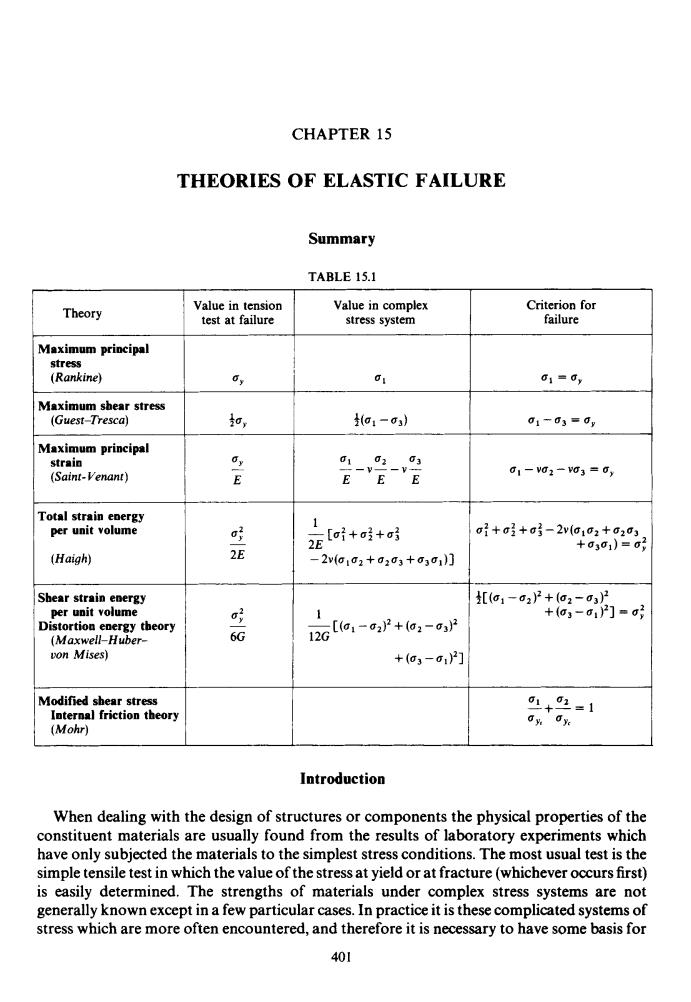正在加载图片...

CHAPTER 15 THEORIES OF ELASTIC FAILURE Summary TABLE 15.1 Theory Value in tension Value in complex Criterion for test at failure stress system failure Maximum principal stress (Rankine) 01 61=0, Maximum shear stress (Guest-Tresca) 扣, (a1-) 01m03=0, Maximum principal strain (Saint-Venant) E 01-VG2-03=0, Total strain energy per unit volume 2i++时 c1+c3+a3-2va102+0203 (Haigh) 2E +0301)=0 -2v(G12+0203+a301)] Shear strain energy [(c1-022+(a2-032 per unit volume +(o3-01]=时 Distortion energy theory (Maxwell-Huber- 器 12G[a,-P+a2-, von Mises) +(o-0] Modified shear stress 4+2=1 Internal friction theory 0y0. (Mohr) Introduction When dealing with the design of structures or components the physical properties of the constituent materials are usually found from the results of laboratory experiments which have only subjected the materials to the simplest stress conditions.The most usual test is the simple tensile test in which the value of the stress at yield or at fracture(whichever occurs first) is easily determined.The strengths of materials under complex stress systems are not generally known except in a few particular cases.In practice it is these complicated systems of stress which are more often encountered,and therefore it is necessary to have some basis for 401CHAPTER 15 THEORIES OF ELASTIC FAILURE Maximum principal stress (Rankine) (Guest-Tresca) strain (Saint- Venant) Maximum sbear stress Maximum principal Total strain energy per unit volume (Haigh) Summary TABLE 15.1 UY +% UY E - - U: 2E Value in tension 1 1 test at failure Theory I I Sbear strain energy per unit volume Distortion energy tbeory (Maxwell-Huhuon Mises) 4 6G Modified sbear stress Internal friction theory Value in complex stress system 1 2E - [Uf + u: +a: - 2V(UlU2 + u2u3 + u3u1)] 1 12G -[(a1 - Criterion for failure u1 =uy 61 - 03 = 6, u, - vu2 - vu3 = cry u: + u: + u: - 2v(u,u2 + u2u3 + u3u1) = u; Introduction When dealing with the design of structures or components the physical properties of the constituent materials are usually found from the results of laboratory experiments which have only subjected the materials to the simplest stress conditions. The most usual test is the simple tensile test in which the value of the stress at yield or at fracture (whichever occurs first) is easily determined. The strengths of materials under complex stress systems are not generally known except in a few particular cases. In practice it is these complicated systems of stress which are more often encountered, and therefore it is necessary to have some basis for 40 1